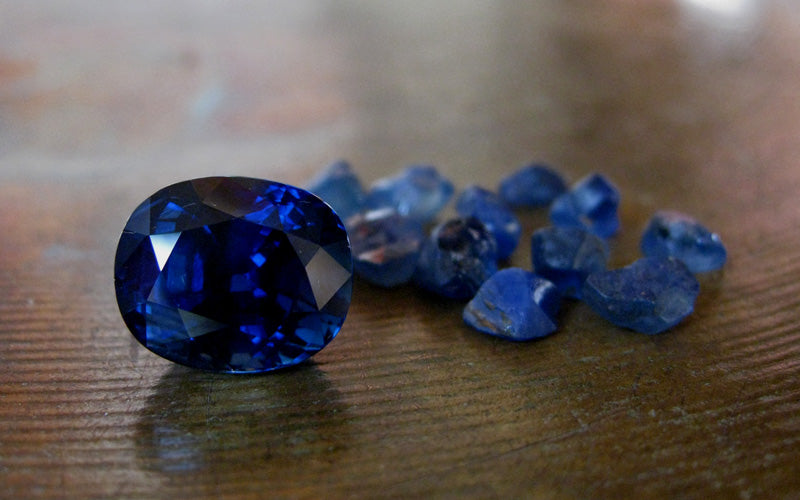The Facts On Facets November 30 2015
Adorning a gemstone comes naturally to many. We become entranced by its rich color and its glimmering facets as wear it on our hands and around our necks. Our beauty illuminates through its natural form as we show the world the coupled existence between lady and gem. Being as much a part of ourselves, we should identify everything that makes these gems as beautiful as they are.
In particular, the facets of a gem can greatly define whether it shines elegantly or remains dim perpetually. The facets of any gemstone are borne out of precise cuts which can be appraised using the 5 P’s: points, proportions, polish, positioning and performance.
Points refer to the precision of each cut producing a single facet on the gemstone. Ideally each cut should be even and uniform so that the edges and intersection are well aligned and symmetric. Achieving this ideal requires great craftsmanship and patience as the master lapidarists make highly accurate adjustments to the height, angle and index of the gem position when performing each cut. It is therefore no wonder that the saying, ‘cut and look…cut and look’, is a time honored reality for many of these highly skilled lapidarists.
 Proportions refer to the size of the gemstone with respect to each of its components. The most suitable cut for any gemstone should encompass a ratio where 1/3rd of the gemstone consists of the crown (the top part) and 2/3rd of the gemstone consists of the pavilion (the bottom part). This golden ratio ensures that the refraction and reflection of light through the gemstone remains even given that all other aspects are followed precisely.
Proportions refer to the size of the gemstone with respect to each of its components. The most suitable cut for any gemstone should encompass a ratio where 1/3rd of the gemstone consists of the crown (the top part) and 2/3rd of the gemstone consists of the pavilion (the bottom part). This golden ratio ensures that the refraction and reflection of light through the gemstone remains even given that all other aspects are followed precisely.
Polish is mere integrative component of points and proportions. Achieving these two factors will ensure that this gemstone grants its bearer a wonderful polish. By allowing light to follow symmetric paths in a well-proportioned gemstone, it will naturally illuminate a sincere polish of master craftsmanship and hence would be a clear indicator that the gemstone has received a precise cut.
Positioning is another skill that requires decades of training and mastery to perfect. A rough gemstone will almost always have a few inclusions and imperfections within it but it is the trained eye of the master lapidarist to determine exactly what portion of that rough can be utilized to produce a flawless masterpiece. By cutting in exact positions within the rough, the lapidarist can manipulate the flow of light through the gemstone to hide, minimize and even eliminate certain inclusions and therefore this component plays a significant role in creating a gemstone worthy of timeless appreciation.
The final factor, performance, is another integrative component which takes in to account of all the other pieces that make a precise cut. If all factors have perfectly aligned with each other, the gemstone will be able to perform optically even when tilted or shifted from its normal orientation. It will be able to reflect and refract the maximum amount of light through its structure so that it appears as if it is glimmering and dancing in the many shades of its lush color.
You now have a bigger toolkit to evaluate the next gemstone you purchase. The points, proportions, polish, positioning and performance of a gemstone play an integral role in determining its beauty and ability to illuminate your own. The skill, mastery and patience possessed by the craftsmen who form these gemstones are indeed remarkable and it surely is surfaced by generations of people who continue to wear and embrace this natural gift.
